In honor of the 50th anniversary of the New York City Landmarks Preservation Law, the New York School of Interior Design has launched an exhibit called “Rescued, Restored, Reimagined,” which shines light on some of the city’s most overlooked protected spaces.
“Often, when we think of landmarks, we think of exterior architecture,” said NYSID President David Sprouls in a release. “A building’s exterior may be protected, but the interiors are frequently disregarded. This exhibition turns that notion on its head by focusing on the important role that interiors play in our lives.”
So what makes an interior worthy of the protective designation? New York City’s Landmarks Preservation Commission (or LPC, for short) recognizes that “the definition of a landmark could hardly be broader.” The criteria for interiors—a classification established by an amendment in 1973—only requires a space be 30 years or older, have “special historic or aesthetic interest or value,” and be “customarily open or accessible to the public, or to which the public is customarily invited.” But despite the liberal qualifications, only 117 interiors hold the title out of 31,000 total landmarked properties in the city.
The show pays tribute to 20 spaces, dividing the interiors into the three categories of its name: rescued, restored, reimagined. By displaying more than 80 photographs—some archival, some newly commissioned—the exhibition hopes to illustrate that while “interiors are sometimes out of sight, but they should not be out of mind.”
Admission is free and open to the public Tuesday through Saturday from 11 a.m. to 6 p.m., now through April 24. For more info, head over to landmarkinteriors.nysid.net or read on for a few of our favorite spots included in the show.
Should you feel passionately about a space that hasn’t yet made the list, propose a landmark by submitting a request to the LPC to start the evaluation process.
The Beacon Theatre
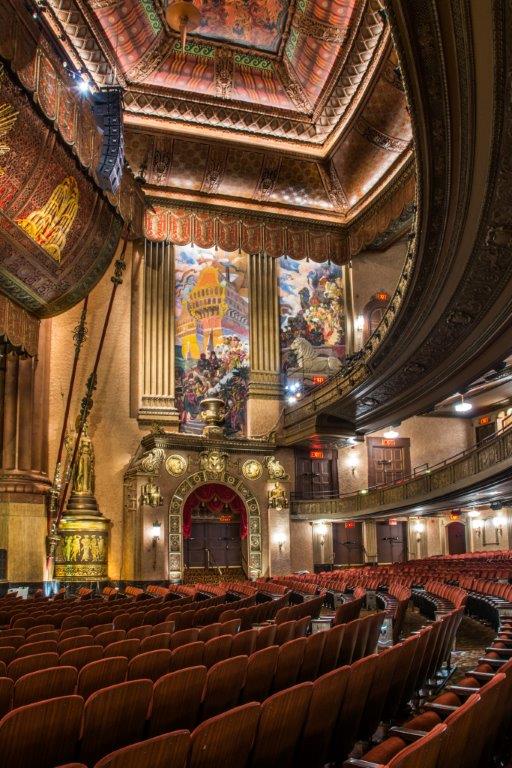
One of the last “great movie palaces of New York,” The Beacon Theatre was designated a landmark in 1979. Art Deco in style with a lavish rotunda lobby, the space still functions as a theater with a regular calendar of music and comedy performances.
Dime Savings Bank
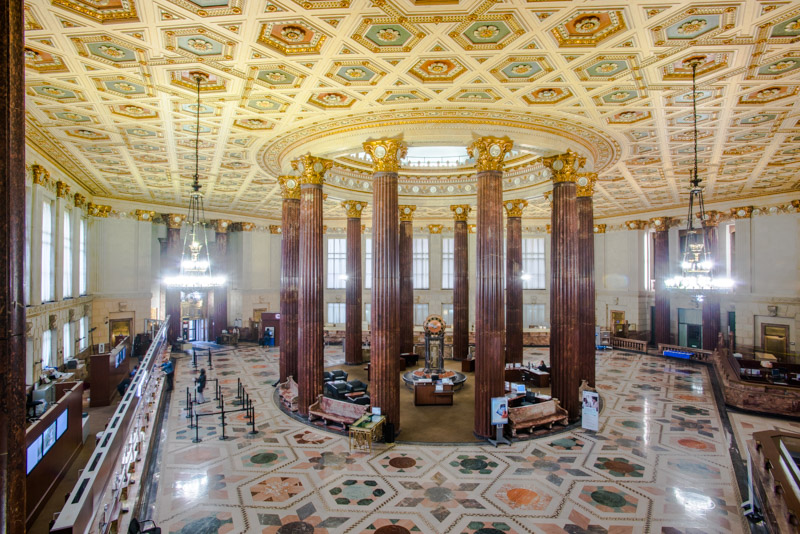
Once the busiest savings bank in Brooklyn, the grand Williamsburg space has adapted to include modern technologies like ATMs and security cameras, but key historic architectural features—including columns adorned with oversized dimes—remain preserved.
Film Center Building
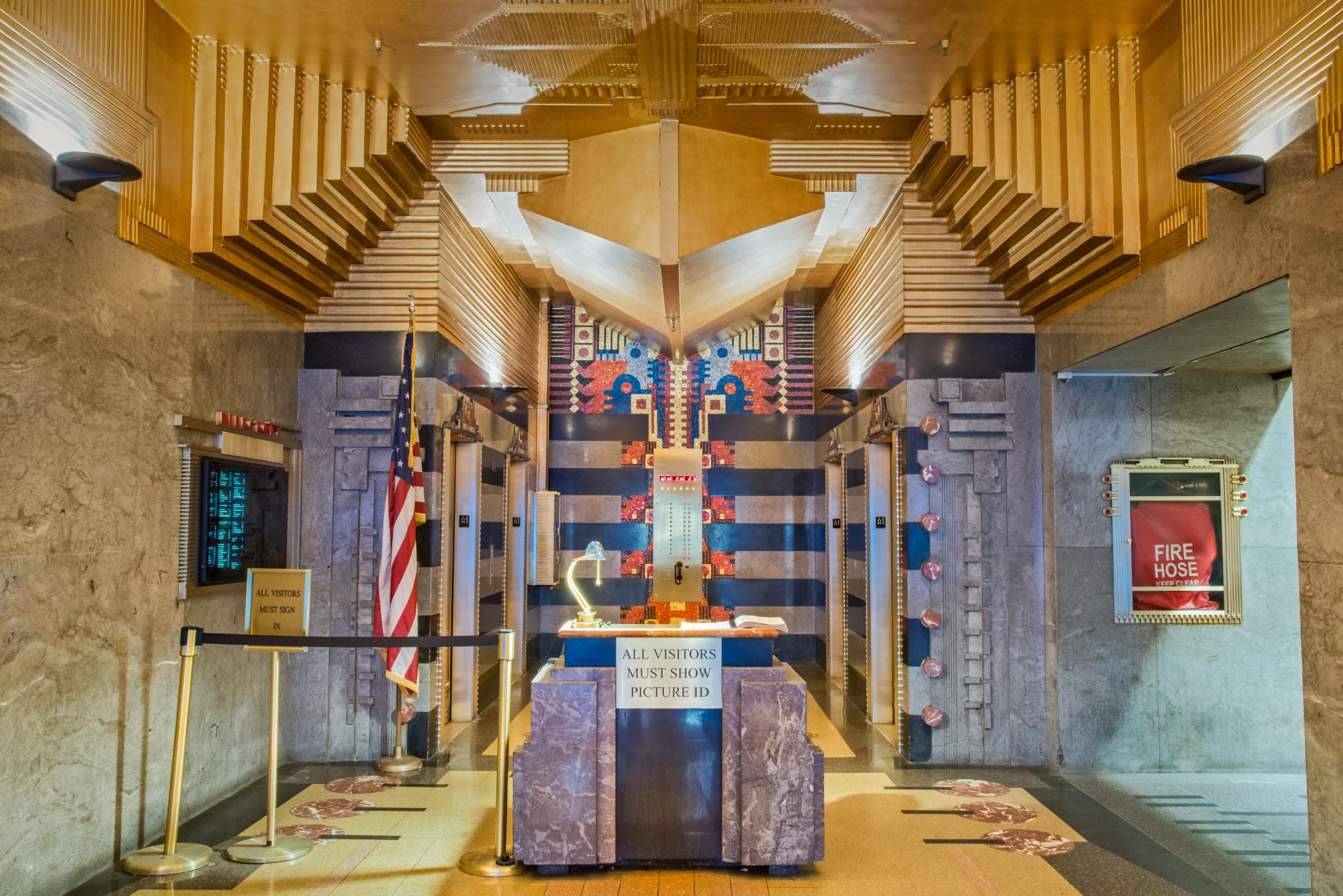
Tourists could walk right past this 9th Avenue office building, never knowing that a colorful interpretation of Art Deco design lies hidden on the first floor. Like something straight out of an F. Scott Fitzgerald novel, the ceiling is gilded and a colorful geometric pattern brightens one wall of the elevator bank.
City Hall
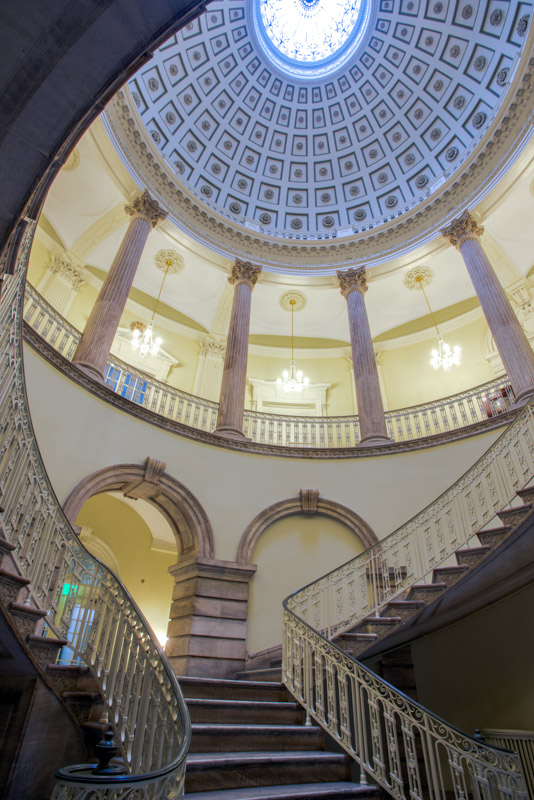
City Hall in downtown Manhattan was among the first interiors designated after the amendment passed, and its two-story rotunda remains one of New York’s best-preserved examples of neoclassical architecture.
Della Robbia Bar
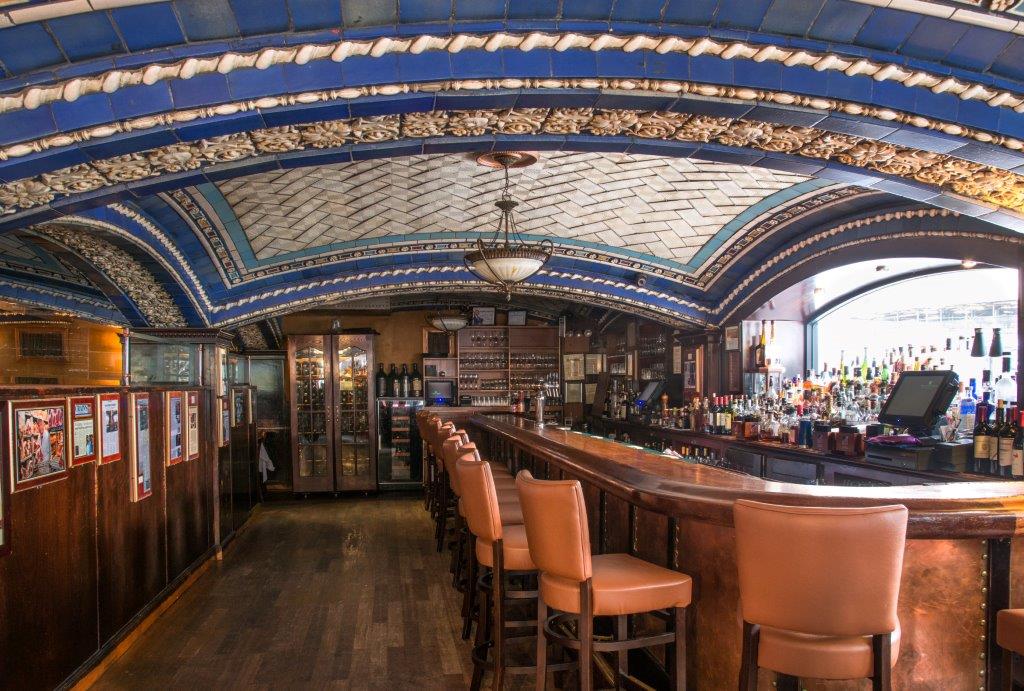
With a vaulted ceiling of Guastavino tile accented by ornamental pieces from the Rookwood Pottery Company, the Vanderbilt Hotel’s former underground bar and restaurant now functions as part of Wolfgang’s Steakhouse.
Ford Foundation

The youngest of New York City’s designated interiors, the cube-like Ford Foundation headquarters feature an atrium at their center, and each glass-walled office within the building can be seen (to some degree) from every other.
The Four Seasons Restaurant
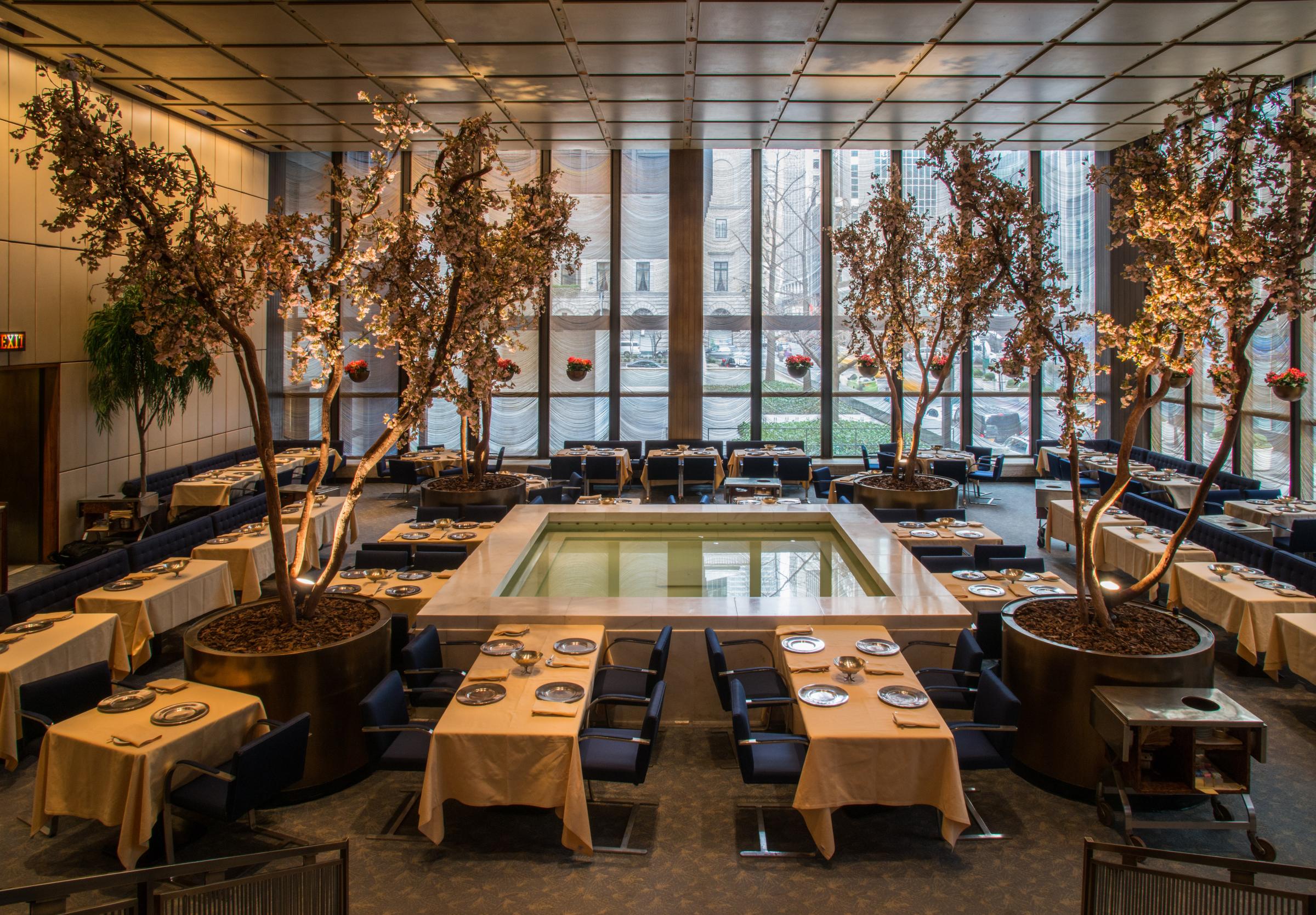
The interior of The Four Seasons Restaurant reflects the modular style of the Seagram Building’s exterior. Designed by architect Philip Johnson, the space is outfitted with marble, French walnut, and bronze details and is currently undergoing restoration.
Loew’s Paradise Theater

Designed to represent a 16th century Italian garden, the 4,000-seat theater is recognized for its plasterwork and vibrant sky-like blue ceiling, complete with light-bulb stars. The space was closed for many years for restoration, but re-opened in 2012 as a church and meeting space.
Marine Air Terminal

LaGuardia Airport might not leave travelers awestruck today, but back in the ‘30s and ‘40s, visitors would crowd the Marine Air Terminal observation deck, hoping to catch a glimpse of airplanes taking off and landing. During the Great Depression, the Work’s Progress Administration commissioned a mural by James Brooks for the ticketing hall, a piece which was restored by the artist in 1980.
Mark Hellinger Theatre
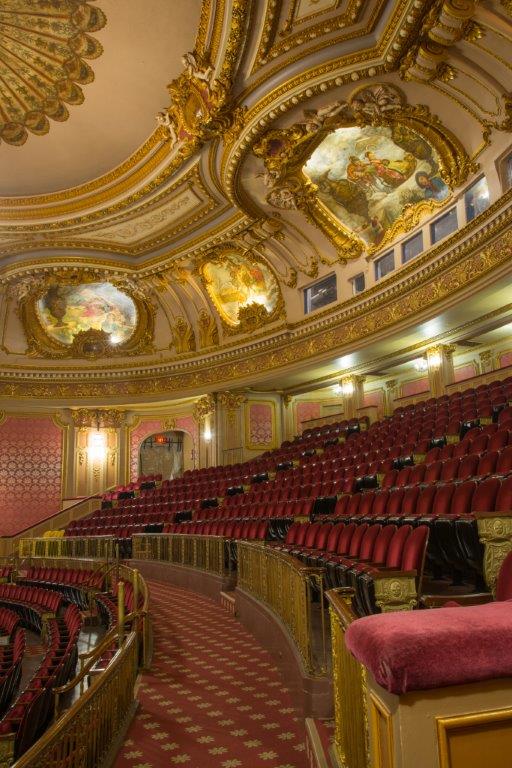
A classic movie palace built in Times Square, the Mark Hellinger Theatre features a domed ceiling, extensive plasterwork, and gilding throughout the auditorium, culminating in an opulent central chandelier.
Radio City Music Hall
The Showplace of the Nation is the largest indoor theater in the world. Home to The Rockettes, the auditorium’s geometric Art Deco design was given landmark status in 1978, saving the iconic space from demolition.
Surrogate’s Court Hall
Originally designed by John Thomas to be a new City Hall, the elaborate courthouse in actuality became the city’s Hall of Records, and in 1962, the upper-level courtrooms were occupied by the Surrogate’s Court, hence the modern moniker. Despite its landmark designation, the space has deteriorated over the years, but a renewed interest in repairs and restoration appears promising.
Williamsburgh Savings Bank
Architect George B. Post designed this Brooklyn bank to resemble a cathedral, not in reverence to god, but instead to “the almost religious act of the savings bank depositor.” After changing ownership multiple times, the building’s iconic tower was converted into condominiums, and the floor and vault below now serve as a special-events venue.
More from Travel + Leisure:
More Must-Reads from TIME
- Cybersecurity Experts Are Sounding the Alarm on DOGE
- Meet the 2025 Women of the Year
- The Harsh Truth About Disability Inclusion
- Why Do More Young Adults Have Cancer?
- Colman Domingo Leads With Radical Love
- How to Get Better at Doing Things Alone
- Michelle Zauner Stares Down the Darkness
Contact us at letters@time.com